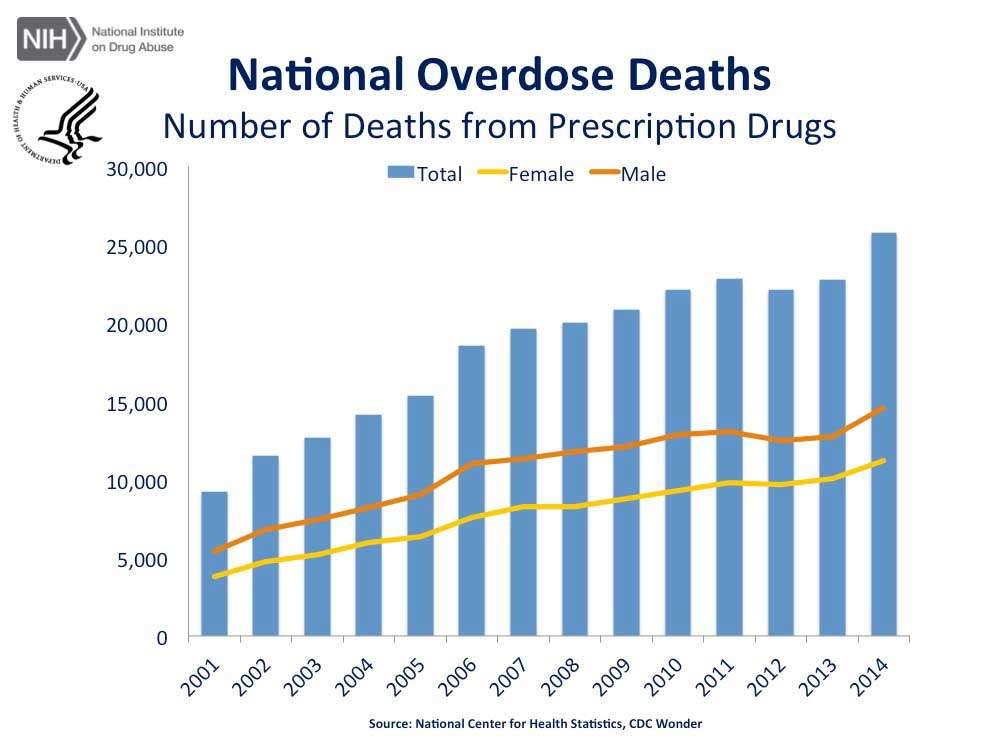That report put the number of drug overdose deaths that year at 47,055, jumping 23% in four years. Heroin and prescription opioids accounted for 61%, but the use of the stimulants cocaine and methamphetamine also killed thousands, and a few thousand more died from benzodiazepines such as Xanax (alprazolam) and Valium (diazepam).
[The CDC just released 2015 overdose death figures, and they show more of the same. Overall overdose deaths jumped another 5,000 to more than 52,000, with heroin and prescription opioids accounting for 63%. But this latest report doesn't provide a breakdown on deaths by drug categories like the report on 2014 does.]
Here, in rank order of deaths, are the 10 drugs Americans are ODing on:
- Heroin—10,863
- Cocaine—5,856
- Oxycodone—5,435
- Alprazoloam—4,217
- Fentanyl—4,200
- Morphine—4,022
- Methamphetamine—3,727
- Methadone—3,895
- Hydrocodone—3,274
- Diazepam—1,279
The CDC identified two main causes of the continuing increase in drug overdose deaths: A 15-year increase in prescription opioid deaths as a result of misuse and abuse and a more recent surge in heroin deaths. The former can be associated with the loosening of restrictions on opioid prescribing and the introduction of Oxycontin in 1996, while the latter can be associated with the tightening of restrictions on opioid prescribing in the face of a rising prescription pain pill death toll.
The 2014 death figures reveal changing trends in death-risking drug use as well. Compared with just four years earlier, heroin deaths more than tripled and fentanyl deaths more than doubled, while prescription pain pill ODs actually declined and the benzos stayed relatively stable. But meth deaths had nearly tripled, and cocaine deaths increased by about 25%.
The CDC isn't too pleased about the situation.
"The increasing number of deaths from opioid overdose is alarming," said CDC Director Tom Frieden, M.D., M.P.H. "The opioid epidemic is devastating American families and communities. To curb these trends and save lives, we must help prevent addiction and provide support and treatment to those who suffer from opioid use disorders. This report also shows how important it is that law enforcement intensify efforts to reduce the availability of heroin, illegal fentanyl, and other illegal opioids."
Frieden's final recommendation, though—more drug war—seems to ignore that this entire phenomenon is occurring precisely under a regime of intensive drug law enforcement that has been going on for more than 40 years. Why more of the same would change the outcome is a question that remains unanswered.




Those numbers appear low